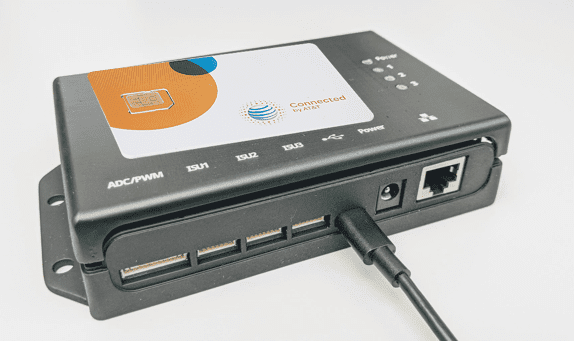AT&T has released an LTE and LTE-M gateway device to backhaul data from IoT sensors over cellular in global markets. The new solution, presented by AT&T as a ‘guardian device’, integrates silicon, software, and cloud services from Microsoft Azure.
It is positioned, like a private network gateway or hotspot, to forward data from IoT devices running on sundry short-range technologies to the cloud. AT&T said its benefits to enterprises, seeking to connect machines to the internet, include security, reliability, and range, compared with standard Wi-Fi connectivity.
It also talked up its easy setup and global functionality; the new device uses AT&T’s global SIM and roaming to work in 200-odd countries with 500-odd carriers. The company is offering managed services to support its day-to-day operations. It also works with 2G and 3G networks; functionality is determined by region, said the operator.
IoT devices, integrated into new machines or retrofitted into old ones, can connect over a range of protocols to the devices. These include Ethernet, Bluetooth, Zigbee, and LoRaWAN, alongside sundry embedded interfaces and bus protocols, like SPI, I2C, UART, GPIO, ADC, and PWM.

Multiple IoT sensors can connect simultaneously to the guardian device; the number hinges on their functionality, power requirements, and connectivity methods, said AT&T. It reckons the device will help businesses transform operations “quickly through massive IoT deployments at scale”.
AT&T is targeting a variety of industries, notably food and retail chains. Galen Hunt, distinguished engineer and managing director of Microsoft Azure Sphere, commented: “Cellular connectivity is a great addition to the Wi-Fi connectivity option natively offered through Azure Sphere. Cellular presents a compelling opportunity for enterprise customers to solve real world business problems through data and insights.
“For instance, retail organisations with embedded or franchised stores – such as convenience stores, fast food restaurants, coffee shops, located in grocery stores, airports, hospitals, or remote locations – with third-party owned Wi-Fi, are now able to simply retrofit a cellular guardian module with Azure Sphere and connect securely and directly to their cloud environments to improve product quality and customer service and to reduce operating costs.”
Mo Katibeh, executive vice president and chief product and platform officer in AT&T’s business unit, said: “With the combined solution from AT&T and Microsoft, we’re offering our customers the means to accelerate their innovation and business problem-solving – simply. This is about creating simple customer experiences that remove connectivity complexity. With cellular, devices just work without the customer having to do Wi-Fi pairing or managing issues with Wi-Fi networks that are not under their control.”
The point about control and privacy is key, it seems. The combination of the AT&T network and in the Azure cloud and IoT platform promises higher-grade security than available with other backhaul solutions, over the public internet. Hunt said: “As enterprises set their sights on what can be achieved through innovation, the precautions organisations must take when connecting their essential equipment to the cloud are well warranted.
“If not secured adequately, infrastructure can become vulnerable to exploitation, leading to equipment being rendered useless or controlled for malicious purposes, data pollution or confidential information being compromised. IoT attacks put organisations at risk and can be so disruptive that they jeopardise long-term business value and objectives.”
AT&T and Microsoft struck a deal in July last year around pioneering new IoT solutions; this new cellular guardian device is the first fruit of the multi-year partnership, geared around pooling their respective talents in cloud, AI, and 5G, and other IoT connectivity standards.
AT&T is becoming a “public cloud first” company, it says, by migrating most non-network workloads to the public cloud by 2024. That initiative will allow AT&T to focus on core network capabilities, accelerate innovation for its customers, and empower its workforce while optimizing costs.

